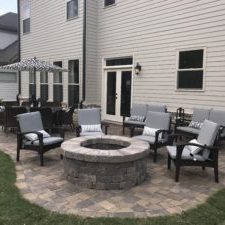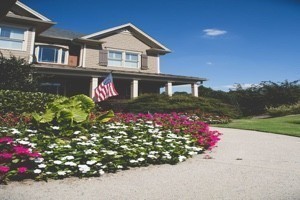Having a small outdoor space doesn’t mean you have to compromise on style or comfort. With a little creativity, you can transform even the tiniest deck into a cozy and functional outdoor retreat. Designing small decks can be fun and challenging, as it pushes you to make the most out of the available space.
Maximizing Space with Multifunctional Deck Furniture
Using multifunctional furniture is a smart way to maximize space on a small deck. Look for pieces that serve more than one purpose to make the most out of every square inch. For example, a bench with built-in storage can hold garden tools, cushions, or outdoor toys. This kind of bench provides seating and helps keep your deck tidy.
Foldable furniture is another great option for small spaces. Tables and chairs that can be folded and stored away when not in use free up space for other activities. You can pull them out for dining or entertaining, then tuck them away to create more room for lounging or playing.
Consider using stackable furniture pieces as well. Stackable chairs and tables are easy to put away when you need more space. When guests come over, you can quickly set up extra seating. Multifunctional furniture helps you keep your deck versatile and organized, making it enjoyable and functional without feeling cramped.
Using Vertical Elements for Added Style
In a small outdoor space, vertical elements can add style and functionality without taking up floor space. One way to use vertical space is through vertical gardening. Installing hanging planters, wall-mounted pots, or vertical garden systems can add greenery and beauty to your deck. This approach allows you to grow flowers, herbs, or even small vegetables without sacrificing ground space.
Trellises and garden screens are other excellent vertical features. They can support climbing plants like ivy, roses, or clematis, creating a lush, green backdrop. Trellises also add a bit of privacy and can function as beautiful, natural dividers between different zones of your deck.
Using shelves and wall hooks is another way to maximize vertical space. Shelves can hold plants, decorative items, or outdoor essentials, while wall hooks can hang lanterns, garden tools, or even string lights. These vertical elements keep items off the ground and make your deck look neat and stylish. By thinking upwards, you can make your small deck feel more spacious and inviting.
Choosing the Right Rocks and Plants
Selecting the proper rocks and plants for your dry creek bed is essential for both appearance and function. Start with the rocks. Larger rocks create a realistic look and help guide water flow during heavy rains. Use a mix of sizes, from boulders to smaller pebbles, to add texture and depth. Place the largest rocks in the creek bed’s deepest spots to mimic a natural riverbed.
Next, consider the plants that will complement your dry creek bed. Choose native plants that thrive in your area and require minimal maintenance. Grasses, small shrubs, and ground covers work well. Plant these alongside and even among the rocks to create a natural transition from the creek bed to the rest of your garden.
Using mulch around the plants can help retain moisture and keep the area looking tidy. Be sure to choose plants that can handle varying moisture levels, as the area around your creek bed might be dry one day and slightly wet after a rain.
Maintenance Tips for Long-Lasting Dry Creek Beds
Maintaining your dry creek bed is relatively simple but important to keep it looking great. Regularly check for debris that may have collected among the rocks. Clear out leaves, sticks, and trash to prevent blockages and keep the area tidy.
Inspect the rocks periodically. Make sure they haven’t shifted, especially after heavy rain. You might need to reposition some of the rocks to ensure they still guide water effectively and maintain the bed’s shape.
Prune the plants around your dry creek bed to keep them from overgrowing and hiding the rocks. Trim any dead or overgrown parts to promote healthy growth and maintain the aesthetic appeal. Occasionally add new mulch to the planting areas to keep it fresh and effective in conserving soil moisture.
Conclusion
Dry creek beds are a fantastic addition to any landscape. They provide a unique aesthetic while solving practical issues like drainage and erosion. With thoughtful planning, the right rock and plant choices, and minimal maintenance, your dry creek bed can be a long-lasting feature that enhances the beauty and functionality of your garden.
If you’re ready to transform your outdoor space with a dry creek bed, contact Sugar Hill Outdoors. Our team of landscape design professionals can help you create the perfect landscape feature that blends style and practicality. Let us bring your vision to life!





